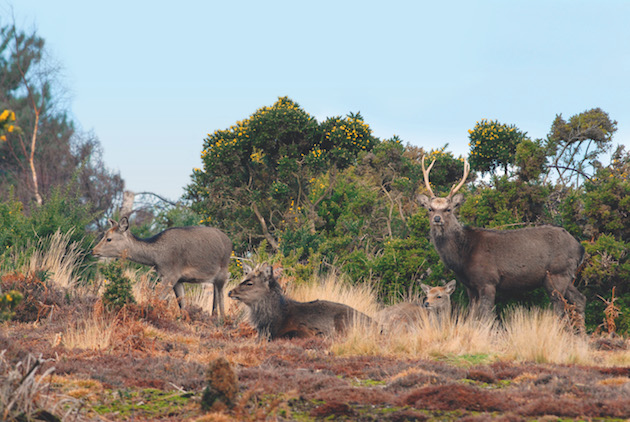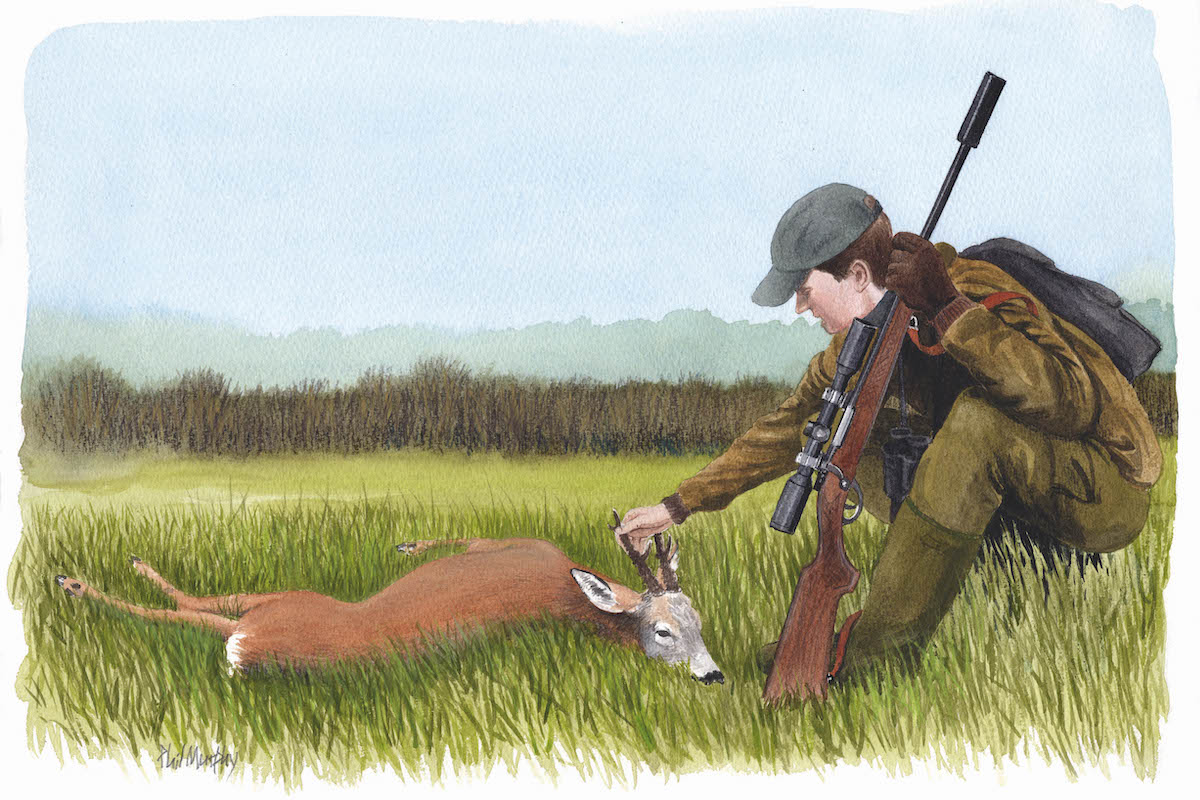Why sika deer are posing a threat to our native reds
As prolific breeders that are happy to hybridise, sika deer pose a real threat to our native red deer population, says Megan Rowland

Sika Deer
Sika deer and Coco Chanel
When I say ‘invasive non-native species’ the first thing to spring to your mind may be mink, the American signal crayfish or Rhododendron ponticum.
It probably isn’t Coco Chanel. A keen angler and worthy of more Shooting Times column space than I can offer, Chanel unknowingly has had a small role to play in the arrival into Sutherland of one of the most fascinating, resilient, prolific, challenging and tenacious non-natives in Britain today: sika deer.
The 2nd Duke of Westminster began his affair with Coco Chanel in the 1920s. After spending time in Sutherland on his newly acquired Reay estate — where Chanel was reported by Winston Churchill to have caught some 50 salmon from the Laxford over two months — the Duke proceeded to buy Rosehall estate. Whether the deer park there was established by previous owners or the Duke and Chanel in their efforts to renovate the property is unclear, but it provided a home to herds of red, fallow and sika for many years.
Escape and thrive
When the affair ended in 1929, the estate, its grounds and deer park fell into disrepair. With walls crumbling, the sika deer did what they do best — escape and thrive.
Cervus nippon are Asiatic deer. There are several subspecies depending on whether they originate in Japan, China, Taiwan or elsewhere and debate over whether the mainland deer are ‘pure’ sika or hybrids of red deer or wapiti.

A young sika buck; sika tend to be solitary, unlike red deer
Guile
Sika hinds generally stand around 50cm-60cm at the shoulder and stags 70cm-80cm — though stags may grow to 100cm-120cm. Anyone who hunts or manages sika deer will testify to their guile but also their adaptability — from feeding and diet, to mating strategies, to their social organisation.
Sika eat everything: grass, heather, leaves, pine needles, gorse, branches, moss. When discussing sika with (the late) Simon Pepper OBE, who chaired the recent Scottish Deer Review, he told me on a trip to Japan he saw bark missing from trees 4m to 5m up. At first he thought it was caused by monkeys but locals told him the damage was due to sika walking on snow drifts and eating the bark. When I say they are adaptable, I mean it.
The mating strategy of open hill red deer is defined by the females, which return each year to the same rutting areas, with males arriving and competing with each other to be the only male present when hinds come into oestrus. By contrast, sika have a range of reproductive strategies. In some instances, males disperse and take up rutting territories in female territories; in other areas sika stags may follow red deer patterns in ‘capturing’ and defending a harem of females. Others may simply ‘sniff the wind’ and prowl around searching for fertile females. In some areas in Europe sika males seem to take a leaf out of the black grouse book, forming leks where they can compete and attempt to woo the ladies.
Sika in the UK also appear to have much higher fertility rates than red deer, with some 80% of yearlings becoming pregnant and up to 90% of adult females.
Unlike other UK deer species, sika fecundity and breeding age are unaffected by density.
Their social organisation also plays in their favour. Like red deer, the sexes generally remain separate through the year, only grouping together for the rut. But unlike red deer, which form matriarchal and bachelor herds, sika are solitary. Combined with their speckled summer pelage and ashy winter coats it is easy to see how they can slip out of sight within moments.

Plantings in Strath Oykel provided sika with a network of habitat corridors, enabling them to spread
Stepping stone
Following the world wars, alarm was raised over the lack of timber stock left in the UK and planting schemes began to take place across the land. The majority of the plantings at Strath Oykel took place during the 1970s and 1980s, creating a network of habitat corridors for sika to spread outwards from central Sutherland. It was the perfect stepping stone for sika from the Rosehall estate.
Over time, new native woodland schemes and commercial forestry operations have sprung up throughout Sutherland and, as the older forests have reached maturity and are beginning to be felled and restructured, these new oases are providing the perfect footholds for these adaptable beasts. All these factors have helped sika elbow in at Sutherland, Scotland and further afield in the UK and Ireland.
Estimations of sika populations in Scotland have varied over the past 30 years. Twenty years ago the estimated population of sika in Scotland stood at around 10,000; a few years later another study placed it at 9,000; two years after that it had apparently leapt up to 25,000. Today the Scottish parliament suggests that it is around 25,000 — but I am not sure anyone truly knows how many we have.

A sIka / red deer hybrid in Ireland
Hybridising wtih red deer
The most worrisome niggle about sika for the deer manager is their ability to hybridise with red deer. The most dramatic example of this hybridisation can be found on the Kintyre Peninsula, where sika and red deer have been mingling since 1893. Professor Josephine Pemberton and her team have been looking into the hybridisation between red and sika in this area for more than 20 years.
As the world of genetic research has opened up, scientists like Prof Pemberton have been able to dig deeper into the family lines of hybrids. This can establish how far back they go, where in the country crossing events are most common, and our management options.
Hybrids are generally a cross between sika stags and red hinds. This is a result of sika dispersal upon maturing, with sika stags appearing in new territories 10 to 15 years before hinds. A 2018 study looked at hybridisation between red deer, wapiti and sika in Scotland and the Lake District. While it found that introgression — genetic transfer via hybridisation — between wapiti and reds was minimal and localised, between sika and red it was much higher; 55% of the deer tested at south Kintyre were hybrids.
Missing the signs
In terms of management, where young males are spotted, immediate culling is recommended to prevent hybridisation with reds. if you are seeing hinds, however, the chances are you’ve been missing the signs for nearly a decade and the best course of action may be to maintain a number of sika hinds for sika stags to chase.
It sounds counterintuitive but I believe, unlike Coco Chanel’s stylish monochrome years, that deer management is invariably unfashionable and never, ever simply black and white.








